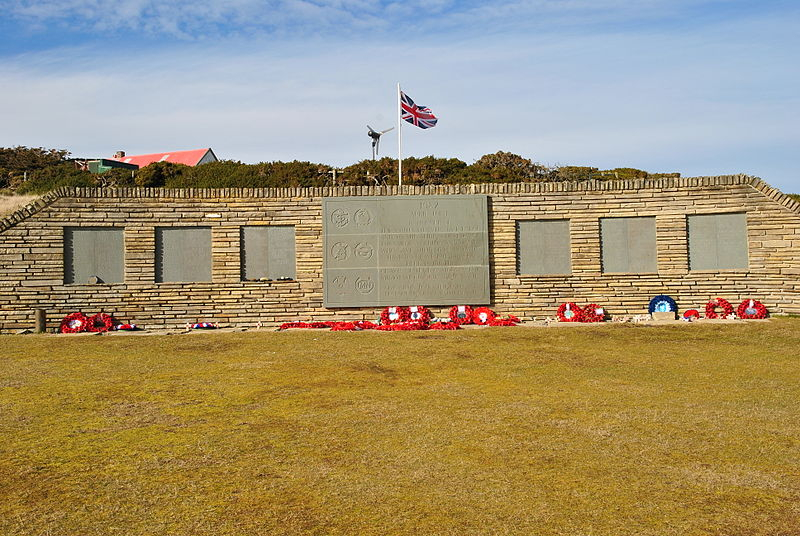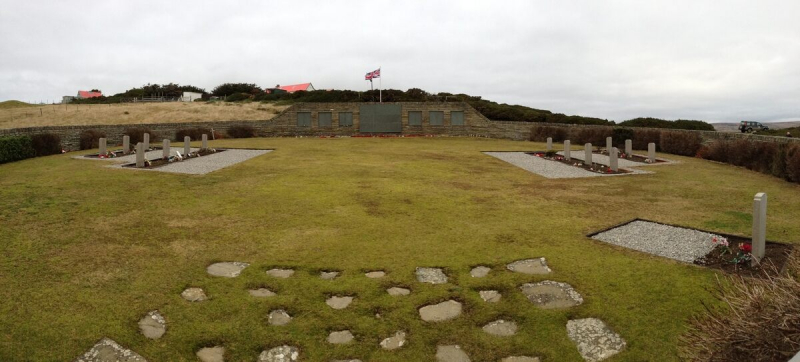Blue Beach Military Cemetery
Many British servicemen who died in fighting during the Falklands War were buried in makeshift graves until the war was over and a permanent cemetery could be built. It was common at the time for British men who were slain in battle to be buried as close to their deaths as possible, and a memorial to their memory to be created as soon as it was safe.
As the Falklands War came to a close, many of the families of British troops who had died felt that their loved ones should be returned to the United Kingdom. In November 1982, the amphibious ship Sir Bedivere was charged with repatriating and bringing back to the UK 63 British soldiers and one civilian contractor. After the initial beach landings at San Carlos during the war, the British Government allowed the building of the Blue Beach Military Cemetery on the precise spot that the 3rd Rangers Brigade picked as its headquarters. On April 10, 1983, the cemetery and memorial were finished and inaugurated. The site was originally the final resting place of 13 British soldiers who died in the fight. Captain John Belt of the Army Air Corps died in an accidental helicopter crash in the Falkland Islands two years after the war ended. His family chose Blue Beach Military Cemetery for his burial, which has since become the final resting place for 14 troops.
The Commonwealth War Graves Commission took over the design and building of a cemetery and memorial in 1982, at the request of the Department of Defense. The MOD approved the ideas on November 12, 1982, at a total cost of £50,000. The construction was finished on April 10, 1983, with the help of 8 Royal Engineers from the Field Squadron and the Gurkhas Brigade. Cumbria's Orton Scar limestone stele and memorial plaques are made of pale green slate.
The graves are split into two sections, each having seven tombs. The Parachute Cemetery, to the right, is named for the four paratroopers who are buried there, including Lieutenant Colonel "H" Jones. Two Royal Signals officers and one Air Force Air Self-Defense Force pilot were among those killed when their Gazelle helicopter was mistakenly shot down by HMS Cardiff. Seven further steles, erected in the same manner as the remains of seven Royal Marines, stand directly across the street. Captain Belt's burial is apart from the rest of the cemetery, within the right entrance, which was erected after it was finished. The San Carlos Museum, which houses images and artifacts from the fighting, is close by.
A memorial service was held at the cemetery on May 21, 2002, the 20th anniversary of the landings. In honor of those who died in the operation, more than 300 islanders and officials from the garrison joined the Governor of the Falklands. The cemetery landscaping around the graves had been cleaned and updated before this ceremony, with the installation of wooden planks, gravel pouring, and tree planting. Contract organizations working at the Mount Pleasant military post organize and carry out this task.
Built on a green lawn, Blue Beach Military Cemetery is more peaceful than ever. Not only that, this place is also a place of reverence and worship for the deceased. And over time, Blue Beach Military Cemetery gives itself a historical beauty, that is the heroism and mettle of those who have sacrificed. Today, the Blue Beach Military Cemetery ranks among the most beautiful historic sites in Falkland Islands.
Location: San Carlos, Falkland.









